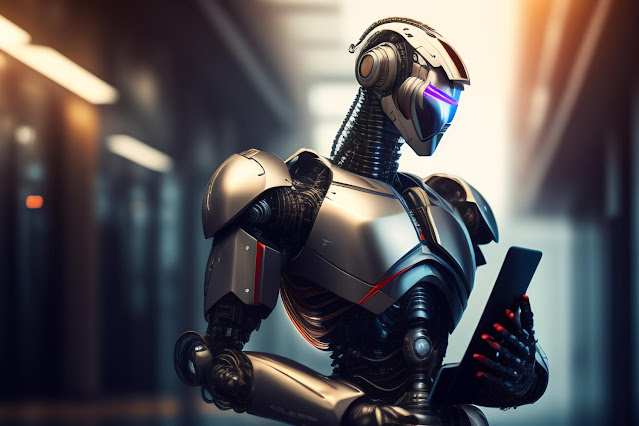We have been captivated by humanoid robots for years. These devices have advanced significantly in terms of technology and functionality from science fiction to reality. We have long been fascinated by humanoid robots, and with recent developments in artificial intelligence and machine learning, the field of robotics is about to enter a new phase.
The humanoid robot is a device featuring a head, torso, arms, and legs that are made to resemble the human shape. The humanoid robot's purpose is to carry out duties that were previously believed to be the exclusive purview of humans. Humanoid robots are currently present in a variety of industries, from assisting in difficult procedures to working alongside people in factories.
But why are humanoid robots developing so quickly, and what does the future hold for these devices? This article will examine the state of humanoid robotics now, the difficulties that still lie ahead, and the possibility for further development.
The Current State of Humanoid Robotics
Although humanoid robots have been around for a while, it wasn't until the late 1990s that their development and use really took off. ASIMO, a humanoid robot developed by Honda, was one of the first instances of its kind. Since then, there has been a constant flow of brand-new humanoid robots, each one becoming more sophisticated than the previous.
Humanoid robots can now run, leap, climb stairs, and even do difficult activities like dancing or playing musical instruments. The humanoid robot is already a useful tool for many different businesses and is no longer just a novelty.
Healthcare is one of the industries where humanoid robots have the most potential. These devices can help with difficult procedures, offer care for elderly patients, and promote greater independence in the lives of those with impairments. Humanoid robots may even be used in common medical tasks like drawing blood or dispensing medication in the future.
Manufacturing is another sector where humanoid robots are having an influence. By performing repetitive chores alongside people, these machines allow workers to concentrate on more difficult and imaginative jobs. Humanoid robots can make factories run more smoothly, with higher levels of output and fewer mistakes.
The Challenges Ahead
The development of humanoid robots has come a long way, but there are still many obstacles to be cleared. The development of robots that can operate in unstructured areas is one of the largest problems. Humanoid robots thrive at doing tasks in a controlled setting, but they struggle when the unpredictable nature of the actual world is present.
Making robots that can interact with people naturally and logically is another difficulty. To accomplish this, robots must be able to comprehend human words, gestures, and facial expressions to appropriately and constructively.
The problem of creating trustworthy and secure robots is the last one. Humanoid robots must be made with safety in mind as they develop and are employed in more demanding applications. This entails creating effective control systems that can stop mishaps and injuries from occurring as well as making sure the robots are safe and secured from hacking and other cyber threats.
The Potential for Future Growth
Despite these difficulties, humanoid robotics has very large future growth potential. Humanoid robots are anticipated to be used more and more frequently in a variety of industries as technology develops.
The field of personal robots is projected to have tremendous growth in the future. Robots that can help with routine jobs like cleaning, cooking, and shopping are in higher demand as smart homes and the Internet of Things gain popularity.
In conclusion, humanoid robots have made incredible strides, and we are now seeing the advent of machines that can carry out functions that were previously believed to be the sole preserve of humans. The potential for future growth in this subject is immense, even though there are still obstacles to be solved.
Humanoid robots will undoubtedly continue to play a significant role in our lives as we move to the future. These devices have the potential to revolutionize every aspect of our lives, from healthcare to manufacturing, personal support to entertainment.
Are you prepared for C-3PO 2.0 then? It is up to us to embrace this technology and realize the full potential of humanoid robotics since it is exciting and full of promise. We can build a world where humanoid robots are an essential part of our daily lives and help us do more than we ever imagined with the correct investments in research, development, and technology. Take the next step and start using humanoid robots to their full potential!


.webp)
_11zon.png)

No comments:
Post a Comment